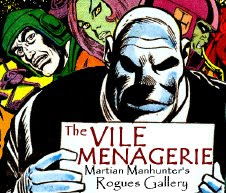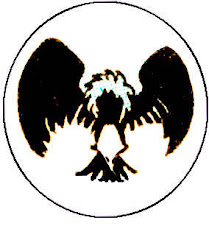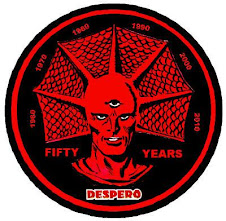
Little is known about the life of Joe Certa, co-creator and longest serving artist of the Martian Manhunter. Certa was born in 1919, educated through the Art Students League, and entered the field in 1946 through Funnies Inc. As part of the comic strip packaging service, Certa's first published work was on titles for Lev Gleason, including the infamous Crime Does Not Pay and Crime and Punishment. For Novelty Press, Certa worked on the strips Bull's-Eye Bill, Target and the Targeteers, The Cadet and Dick Cole, The Wonder Boy. For other publishers, Certa produced work on True Comics, Picture News and more.
The comic book series for which Certa initially made his name were Captain Marvel Jr. (1947-1953,) Joe Palooka (1950-1959,) and The Durango Kid (1950-1952.) Certa also dealt with the newspaper syndicates on Straight Arrow and Curly Kayoe. Most significantly, after the suicide of series originator Ham Fisher, Certa was called up from the Joe Palooka comic book to contribute to the newspaper strip from 1956-59.
Certa began his long association with National/DC in 1949 on The Adventures of Alan Ladd, continuing with Captain Compass, Casebook Mystery, Gang Busters, Robotman, and The Phantom Stranger. For Harvey Comics, Certa regularly contributed to War, First Romance and pre-code horror titles like Black Cat Mystery. Certa produced for the company that would become Marvel Comics throughout the 1950s, mostly on their western and war strips.
In 1955, Joe Certa began his thirteen year run on DC's Manhunter from Mars, co-creating John Jones/J'onn J'onzz and his entire supporting cast, including Zook, Diane Meade, and Captain Harding. With the exception of Professor Hugo, Certa co-created every noteworthy Martian Manhunter villain of the Silver Age, including Mr. V, Marco Xavier, Vulture and the Diabolu Idol-Head.
The lion's share of Certa's art in the 1960s was produced for Western Publishing, for whom he worked exclusively after the Manhunter from Mars ended in 1968. Most of Certa's assignments were in horror titles and licensed properties like Boris Karloff Tales of Mystery, Dark Shadows, The Twilight Zone and Ripley's Believe It or Not!
Joe Certa retired in 1979 after thirty-three years in the industry, and passed away in 1986.
Reference
Lambiek.net
Jerry Bails' Who's Who of American Comic Books 1928-1999
Comicvine






























6 comments:
Glad to see a writeup of Joe Certa. It's a shame there isn't more information about his life. You really have to appreciate the guy when you see how many kinds of faces he could draw. Especially when many artists today rely on a standard idealized face and the only way to tell characters apart is hair color. I mean, Certa could draw some real mugs...that takes a good eye.
That's true. It took me a little time to start appreciating Certa, but he really is a gem. His '50s work is really nicely polished, while his later '60s stuff incorporates elements of Gil Kane and Carmine Infantino that really blow me away.
Certa could also adapt his style to the material. For the early plainclothes detective John Jones stories, the art has a gritty, film-noirish feel. As the Manhunter from Mars became more of a super-hero feature, Certa's style became less detailed and more light-hearted, more cartoony. He had a loose, expressionistic style for the Idol-Head stories, returned to a grittier style for the early Marco Xavier stories, and reverted to a cartoony style for the later, sillier Xavier stories.
I assume he ended up with Manhunter from Mars because he had already been drawing back-up features in Detective Comics for a few years -- first Robotman, then Captain Compass, and then the strip that replaced Captain Compass, Manhunter from Mars. If Schiff had decided to bump Roy Raymond, TV Detective instead of Captain Compass, Ruben Moreira would have been the first Martian Manhunter artist.
Ooo, Moreira would have been interesting...
I've only read one Roy Raymond story, the one from Detective Comics #225, which is included in the couple of facsimile edition reprints of that issue DC has done (because of a certain other story). If that story is a representative example, then Moreira's art is the only reason Roy Raymond lasted as long as he did.
The name was vaguely familiar, so I Googled up some art, and the examples I saw were very nice.
Post a Comment